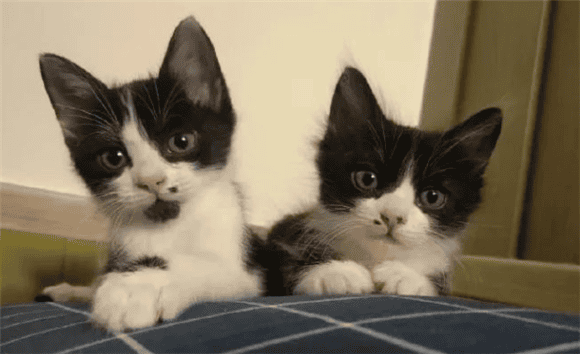Not necessarily
Common possible causes include: black chin, ringworm infection, folliculitis, and dirt. Among them, black chin has the highest probability, and about 99% of cats have/had black chin.

It may also be that the chin is "black"
How to tell the difference? Can this be done at home?
There are only two categories that are recommended to be dealt with at home:
① Dirty things are stuck on - wipe and clean.
② Mild black chin - clean and disinfect the affected area.
Picture from: Cat Research Institute @Crazy Car Posing
How to tell the difference?
· Mild black chin:
The cat only has clogged pores on its chin, which may be accompanied by black slag-like acne, but there are no pustules, redness or swelling.
·Others:
Check the cat’s chin and body skin carefully. If you find small scabs, a large amount of dander, multiple/large areas of hair loss, redness, swelling, ulcers, pustules, For papules, it is recommended to go to the hospital to confirm the cause through Wood's lamp and skin microscopy.
If the black chin is moderate, medication is required
It is also recommended to check first before prescribing medication
How to clean and disinfect a cat with mild black chin?
· It is recommended to use medical chlorhexidine (chlorhexidine) solution for cleaning.
First wet pet hair with warm water, take about 1ml of lotion liquid (concentration reference is 0.5%), gently rub the hair, massage for about 3-5 minutes, then rinse with warm water, be sure to rinse thoroughly and wipe dry moisture.
· After improvement, you can switch to warm saline compresses.
It is recommended to buy it ready-made in pharmacies; when preparing it yourself, you need to pay attention to the proportion and concentration, and choose boiled water or sterile water. Wipe dry after applying warm compress to reduce bacterial growth.

Does it apply to the black "acne" on the cat's tail?
The above method is also suitable for early-stage stallion tail (oily tail) without redness, swelling and ulceration.
Picture from: bing
The black chin in cats keeps recurring. Is there any way to prevent it?
· Replace the cat bowl with one made of stainless steel, ceramic, or glass, which is less likely to cause scratches and accumulate grease.
·Clean the cat bowl with hot water (or dish soap) every day and let it dry before filling it with food.
·You can try to replace cat food with high protein and low carbohydrate; supplement with additional Omega-3 to reduce inflammation and keratinization.

 扫一扫微信交流
扫一扫微信交流
发布评论